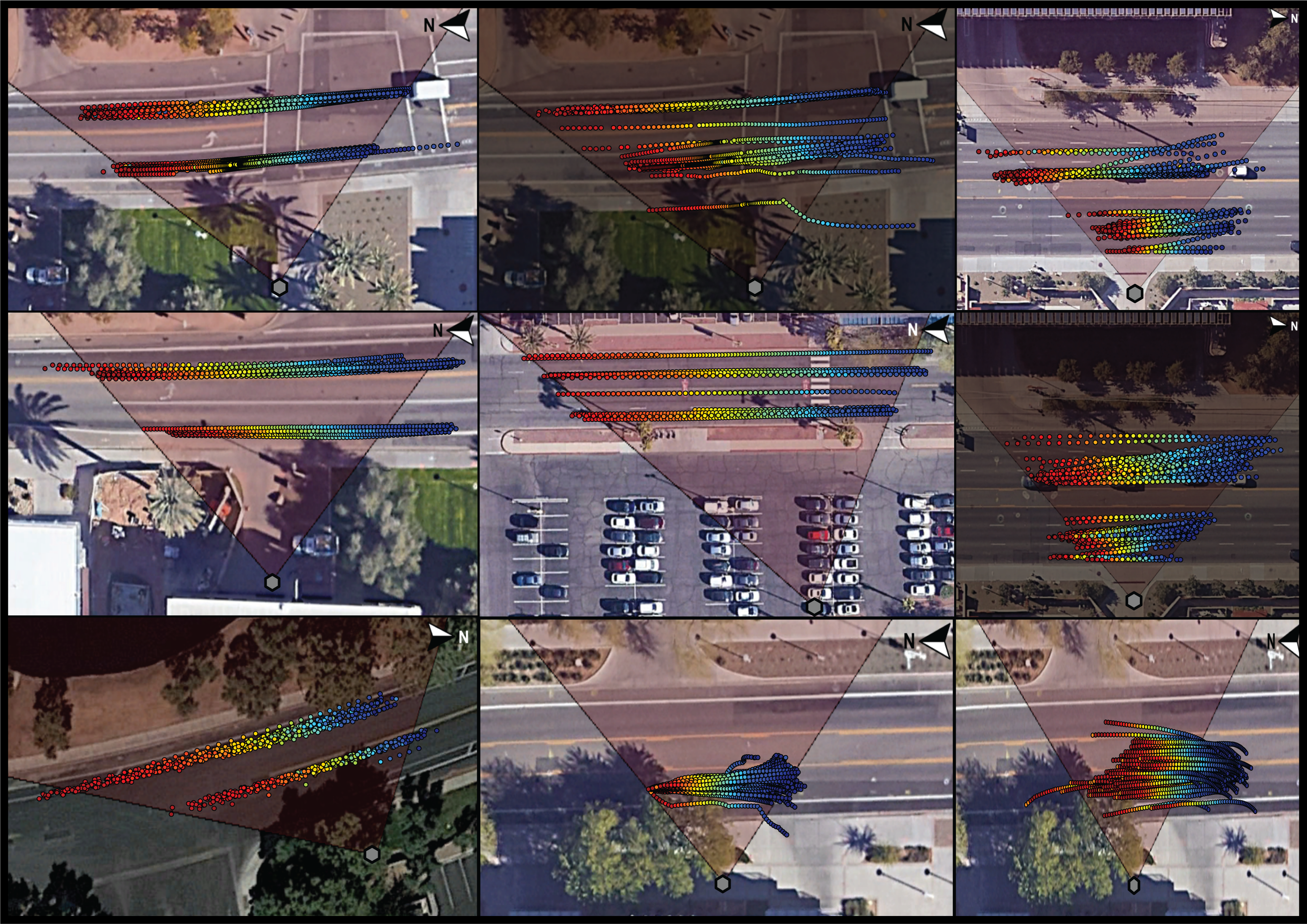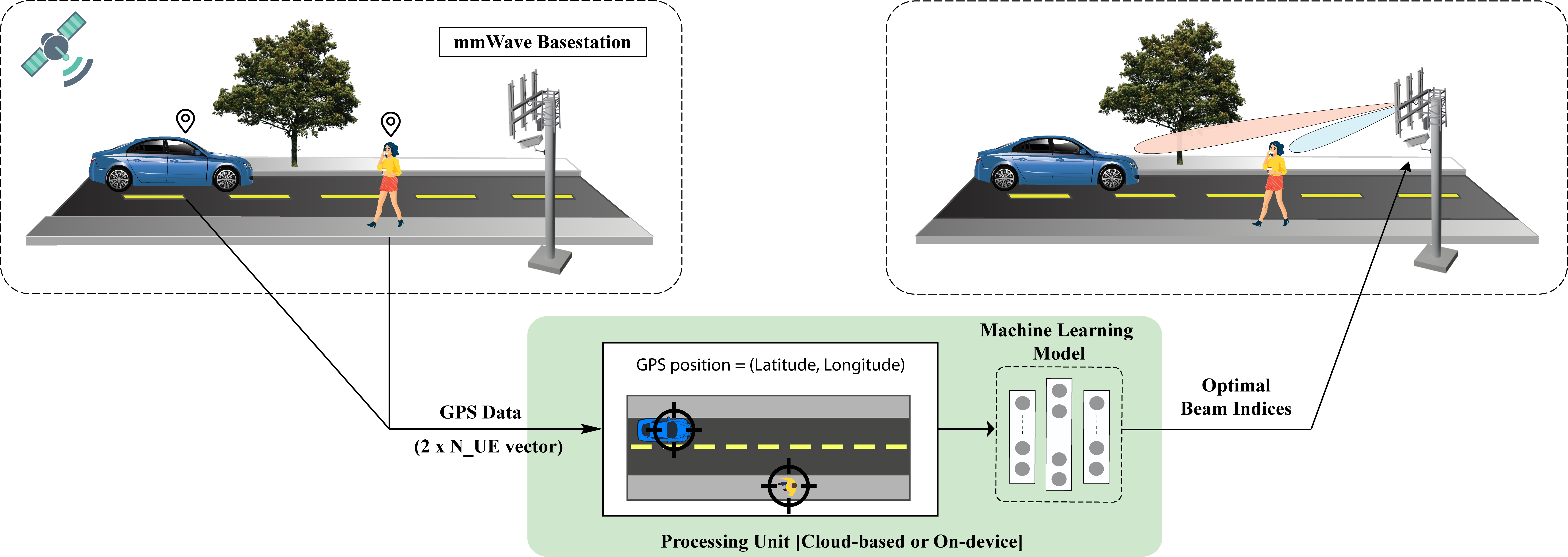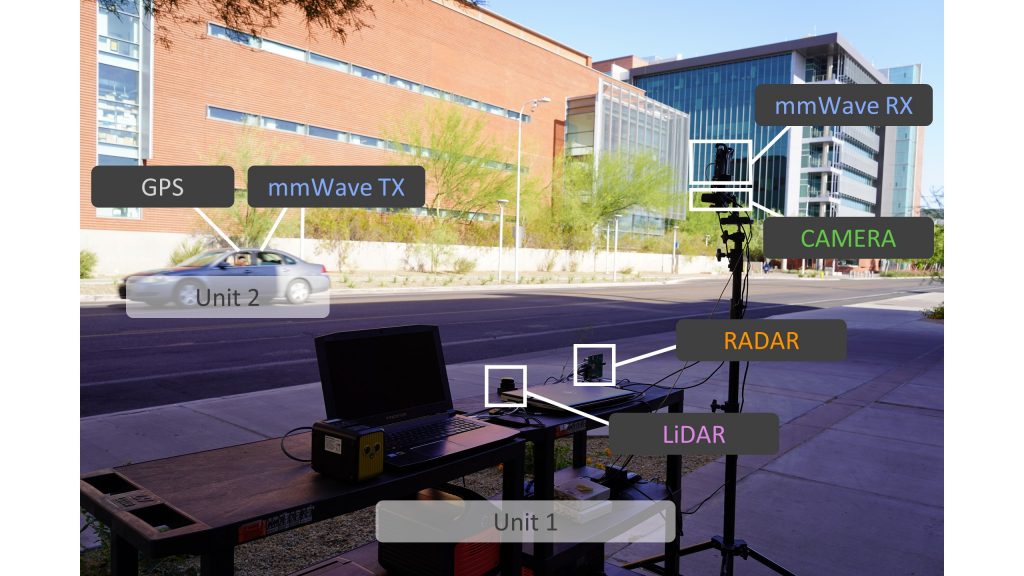Position-aided Beam Prediction in the Real world:
How useful GPS positions actually are?
IEEE International Conference on Communications (ICC) 2023
João Morais1, Arash Behboodi2, Hamed Pezeshki2, and Ahmed Alkhateeb1
1Wireless Intelligence Lab, Arizona State University, USA
2Qualcomm Research, USA

The figure shows GPS position data in real-world deployments, labeled with the optimal beam index reported in that position (64 beams, colder is closer to 1, warm colors is closer to 64). Our objective is to learn the position-to-beam mapping, as means of predicting beams based on GPS positions only. Position permits implicit high-resolution channel feedback while maintaining low overhead requirements, thus making it a great solution to mmWave and THz beam alignment. In this work, show that real world position data contains many sources of noise that literature up to now has not considered, and study many relevant aspects of the position-aided beam prediction task.
Abstract
Millimeter-wave communication systems rely on narrow beams for achieving sufficient receive signal power. Adjusting these beams is typically associated with large training overhead, which becomes particularly critical for highly mobile applications. Intuitively, since optimal beam selection can benefit from the knowledge of the positions of communication terminals, there has been increasing interest in leveraging position data to reduce the overhead in mmWave beam prediction. Prior work, however, studied this problem using only synthetic data that generally does not accurately represent real-world measurements. In this paper, we investigate position-aided beam prediction using a real-world large-scale dataset to derive insights into precisely how much overhead can be saved in practice. Furthermore, we analyze which machine learning algorithms perform best, what factors degrade inference performance in real data, and which machine learning metrics are more meaningful in capturing the actual communication system performance.
Proposed Solution

The figure presents the proposed architecture for position-aided beam prediction. The GPS position of each UE can be pre-processed to reduce any sort of ambient noise, caused by multipath, synchronization issues or simply hardware imperfections. The position data is then normalized and used by a machine learning algorithm (we evaluate a neural network, KNN and a lookup table) to estimate the likelihood of each beam being the optimal beam, in a classification-type task.
Video Presentation
DeepSense 6G Dataset

DeepSense 6G is a real-world multi-modal dataset that comprises coexisting multi-modal sensing and communication data, such as mmWave wireless communication, Camera, GPS data, LiDAR, and Radar, collected in realistic wireless environments. A link to the DeepSense 6G website is provided below.
Scenarios [1-9]
In beam prediction, we used real-world scenarios 1 – 9 of DeepSense6G. For further details regarding each scenario, follow the links provided below.
Reproduce the Results
Please use the GitHub page for the code and the position-aided beam prediction task for the dataset.
Citation
A. Alkhateeb, G. Charan, T. Osman, A. Hredzak, J. Morais, U. Demirhan, and N. Srinivas, “DeepSense 6G: A Large-Scale Real-World Multi-Modal Sensing and Communication Datasets,” to be available on arXiv, 2022. [Online]. Available: https://www.DeepSense6G.net
@Article{DeepSense,
author = {Alkhateeb, A. and Charan, G. and Osman, T. and Hredzak, A. and Morais, J. and Demirhan, U. and Srinivas, N.},
title = {{DeepSense 6G}: A Large-Scale Real-World Multi-Modal Sensing and Communication Dataset},
journal={to be available on arXiv},
year = {2022},
url = {https://www.DeepSense6G.net},}
J. Morais and A. Alkhateeb, “Position-aided Beam Prediction in the Real World: How useful GPS positions actually are?”, in accepted to IEEE ICC, 2023
@misc{JoaoPosition,
author = {Morais, J. and Behboodi, A. and Pezeshki, H. and Alkhateeb, A.},
title = {Position Aided Beam Prediction in the Real World: How Useful GPS Locations Actually Are?},
publisher = {arXiv},
doi = {10.48550/ARXIV.2205.09054},
url = {https://arxiv.org/abs/2205.09054},
year = {2022},}










